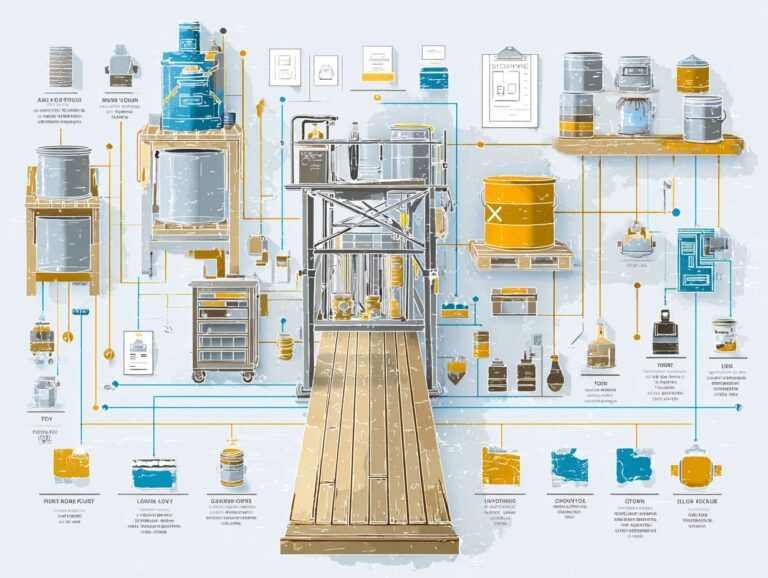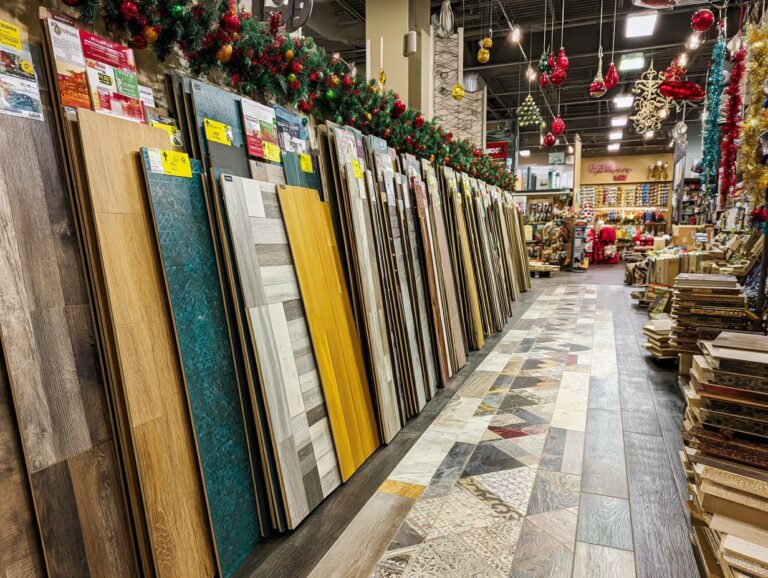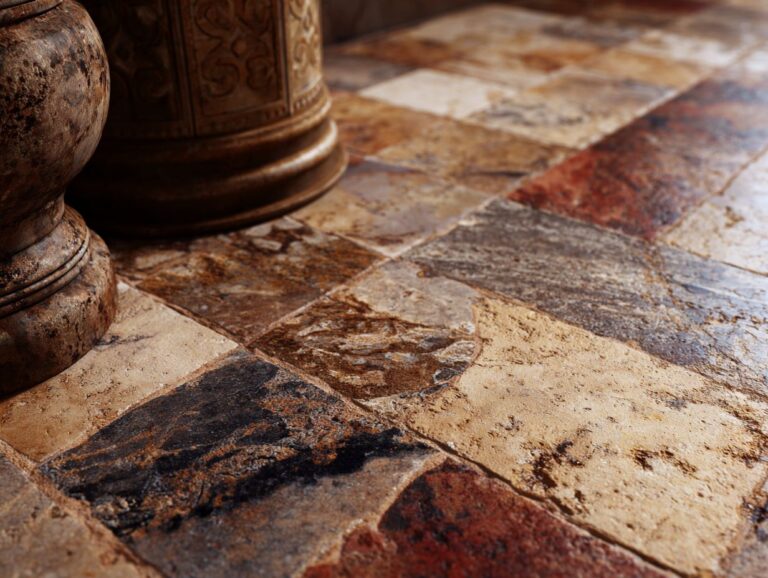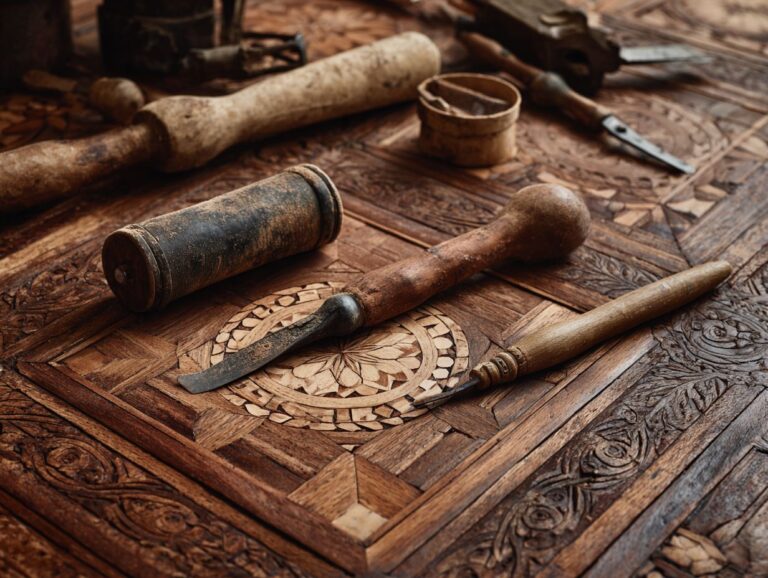Engineered vs Solid Hardwood – Pros, Cons & Cost Differences
Choosing between engineered and solid hardwood flooring can be challenging, especially with differences in cost, durability, and moisture resistance. At Sustainable Lumber Co, we know how important it is to make good decisions for your area. In this article, we’ll look at the advantages and disadvantages of different types of hardwood flooring, and compare their costs, to help you pick the right option for your flooring project.
Key Takeaways:
Contents
- Engineered vs Solid Hardwood Flooring Comparison
- What is Solid Hardwood?
- What is Engineered Hardwood?
- Pros of Solid Hardwood
- Cons of Solid Hardwood
- Pros of Engineered Hardwood
- Cons of Engineered Hardwood
- Frequently Asked Questions
- What is the difference between engineered and solid hardwood flooring?
- What are the pros of choosing engineered hardwood flooring?
- What are the cons of engineered hardwood flooring?
- What are the advantages of choosing solid hardwood flooring?
- What are the downsides of solid hardwood flooring?
- What is the cost difference between engineered and solid hardwood flooring?
Overview of Hardwood Flooring
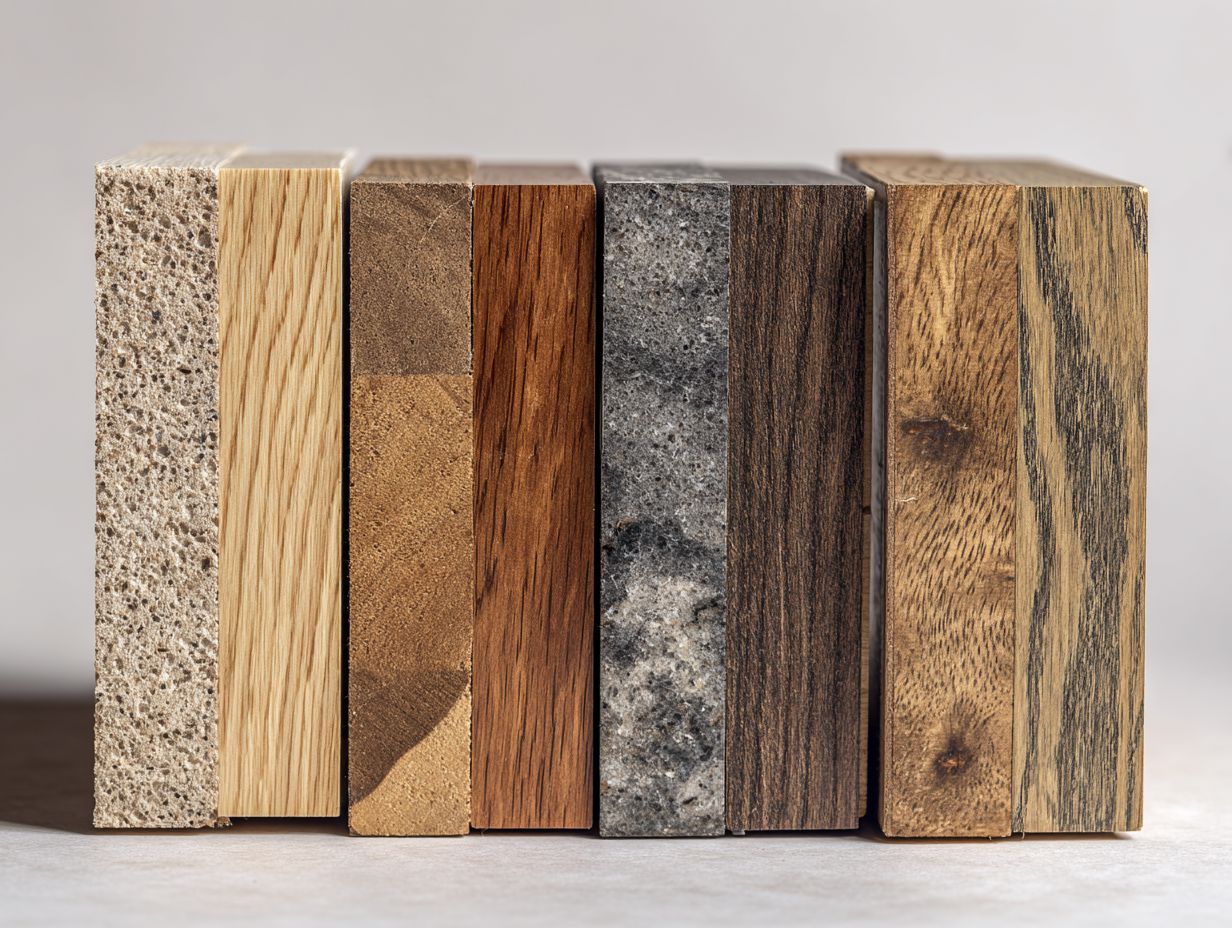
Hardwood flooring comes in two main types: solid and engineered, each offering distinct benefits that cater to various needs and preferences.
Solid hardwood is made from a single piece of wood. It looks classic and can be sanded and refinished repeatedly, making it ideal for long-term use.
In contrast, engineered hardwood has layers of wood veneer on top of a plywood base, providing more stability and resistance to moisture. This makes it a good choice for installations below ground level, like in basements.
In interior design, solid hardwood brings a cozy and classy feel to living spaces. Engineered wood works well in various areas, including kitchens and bathrooms.
Engineered vs Solid Hardwood Flooring Comparison
Engineered vs Solid Hardwood Flooring Comparison
Comparison Metrics: Cost
Comparison Metrics: Installation Costs
The Engineered vs Solid Hardwood Flooring Comparison explains the price differences of selecting various wood flooring options. Knowing these measurements is important for homeowners, builders, and designers who want to manage costs while achieving both style and practical goals.
Comparison Metrics illustrate diverse cost structures for engineered wood, segmented into entry-level, mid-range, and high-end categories. Entry-level engineered wood starts at $2.50 per square foot It’s a cost-effective choice for projects that need to stay within budget while still achieving the appearance of wood flooring. In contrast, mid-range options increase to $7.00 per square foot, offering better quality and aesthetic finishes that suit most residential applications. At the premium end, high-end engineered wood reaches $14.00 per square foot These pieces often show high-quality workmanship, rare wood varieties, and detailed designs, perfect for upscale environments.
- Installation Costs: The method of installation significantly affects the total cost. Glue-down installation is economical at $0.60 per square foot, suitable for engineered wood floors and providing strong adhesion, particularly on concrete subfloors. Nail-down installation, however, is more expensive at $4.00 per square foot, typically used for solid hardwood due to its thickness and structural requirements, providing durability and stability over time.
The choice between engineered and solid hardwood should consider both material and installation costs. Engineered wood offers versatility with a range of price points and easier installation, while solid hardwood, often paired with nail-down installation, provides a timeless, durable finish at a higher expense. This information helps make decisions that fit project aims within budget limits.
Importance of Choosing the Right Type
Choosing the right hardwood is important because it affects how difficult it is to install, how well it holds up over time, and how much care it needs in various settings.
Solid hardwood works best in dry areas because it changes size with moisture levels, which can cause it to warp in wet places.
Engineered hardwood has multiple layers that make it more stable, which makes it a good option for basements or homes with varying moisture levels.
Consider your installation: solid hardwood may require nails or staples, while engineered types often allow for easier glue-down or floating methods.
For instance, in a coastal home, engineered hardwood might be the better choice due to its moisture resistance, ensuring longevity and maintaining aesthetic appeal.
What is Solid Hardwood?
Solid hardwood flooring consists of one solid piece of natural wood, and is often appreciated for its genuine look and classic style.
Definition and Composition
Solid hardwood consists of planks milled from a single piece of timber, typically ranging in thickness from 3/4 inch to 1 inch, and is renowned for its strength.
Common types of hardwood include:
- oak
- maple
- cherry
Each offering unique aesthetics and performance.
The Janka hardness test measures the ability of wood to resist wear and dents, which matters for creating durable floors and furniture. For example, oak usually has a score of about 1,300, which makes it a good choice for areas with a lot of foot traffic. In contrast, softer woods like pine have a score of around 690, meaning they are less durable.
Choosing the correct hardwood requires looking at both its thickness and Janka rating to make sure it fits your needs.
Common Types of Solid Hardwood
Common species of solid hardwood include Oak, Maple, and Douglas Fir, each offering unique aesthetics and durability based on their natural properties.
Oak is well-known for being strong and having unique grain patterns, which makes it a common option for flooring and furniture. It usually costs between $3 to $8 per board foot.
Maple offers a lighter appearance with a fine texture, ideal for cabinetry and countertops, usually priced around $4 to $10 per board foot.
Douglas Fir, while slightly softer, provides a warm reddish hue and is often used in construction, ranging from $2 to $6 per board foot.
Selecting hardwood from sustainable sources improves your space and supports responsible forestry.
Installation Methods
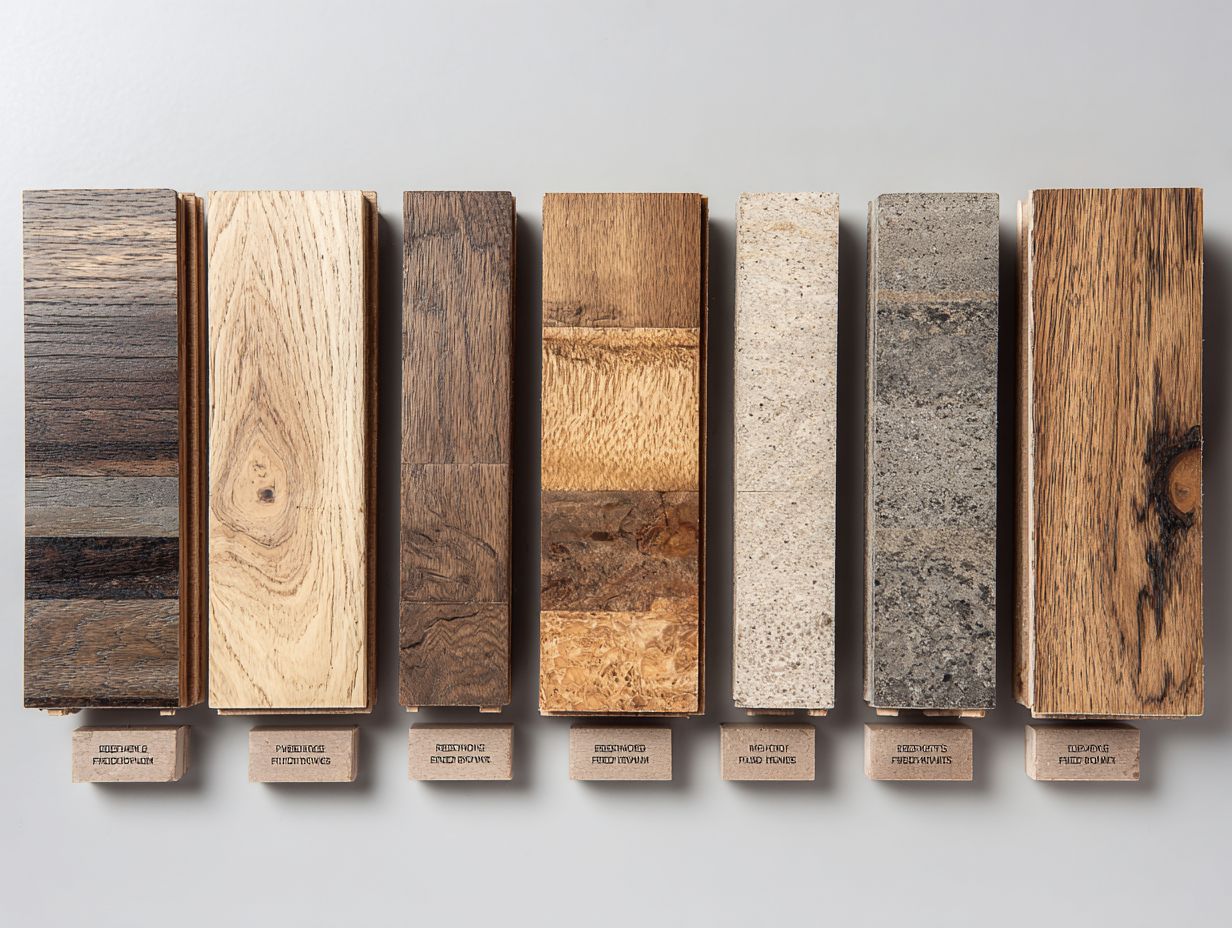
Solid hardwood can be installed using various methods, including nail-down, glue-down, and floating techniques, each with its advantages and challenges.
Nail-down installations are ideal for attaching planks to a wooden subfloor. They are long-lasting but need experienced workers and proper tools.
Glue-down methods work well over concrete, offering strong adhesion but demanding careful preparation to avoid excess moisture.
Floating techniques allow for easier DIY installation, as the boards interlock, but may result in less stability under heavy traffic.
Installation costs range from $3 to $8 per square foot, while typical timelines vary:
- Nail-down takes 1-3 days
- Glue-down can extend to 2-4 days
- Floating often completes in 1 day
What is Engineered Hardwood?
Engineered hardwood flooring is made of multiple layers, providing better stability and resistance to moisture, making it good for various environments.
Definition and Composition
Engineered hardwood consists of a core layer of plywood or high-density fiberboard topped with a hardwood veneer, offering the look of solid wood with added stability.
The plywood core is especially useful because it offers better resistance to moisture and maintains its shape well. For instance, if you install engineered hardwood in a basement or kitchen, the plywood structure helps prevent warping from humidity fluctuations.
The veneer layer can be sanded and refinished, giving you the longevity of solid wood with lower maintenance. Brands like Shaw and Mohawk use advanced adhesives and technology in their engineered products, ensuring durability while keeping costs manageable compared to traditional hardwood flooring.
Layers and Construction
The construction of engineered hardwood includes three to five layers, with the top layer being a hardwood veneer that showcases the authentic appearance of solid wood.
Underneath this veneer, manufacturers typically use layers made of high-density fiberboard or plywood, which provide stability and resistance to warping.
For example, brands like Mohawk and Shaw offer engineered hardwood with a 1mm to 4mm veneer, enhancing both aesthetic quality and durability. This layered design deals with moisture effectively, making it suitable for areas such as kitchens and basements.
When choosing engineered hardwood, check for options with a high AC rating. This rating shows that the surface is durable, so your floors can handle daily use while still looking good.
Installation Methods
Engineered hardwood can be installed using glue-down, nail-down, or floating methods, providing flexibility for various subfloors and conditions.
The glue-down method is ideal for concrete subfloors, requiring approximately $1.50 to $2.50 per square foot in materials and two to three days for completion.
Nail-down is best for wooden subfloors, typically costing $1.00 to $2.00 per square foot and can be finished in a day.
The floating method, preferred for DIY projects, allows for easy installation over various surfaces at around $0.75 to $1.50 per square foot and usually takes about one day.
Engineered hardwood generally deals with moisture more effectively and remains durable over time compared to solid hardwood, making it a reliable option for lasting use.
Pros of Solid Hardwood
People often choose solid hardwood because it is attractive, durable, and can be refinished, making it popular with homeowners.
Durability and Longevity
With proper care, solid hardwood floors can last over 100 years, thanks to their dense composition and ability to be refinished multiple times. This durability makes hardwood an excellent long-term investment.
For instance, the floors in the historic Monticello estate, built in the late 18th century, are still intact today, exemplifying the rugged resilience of solid hardwood. Comparatively, laminate flooring usually lasts 15-25 years and cannot be refinished, leading to more frequent replacements.
To maintain hardwood, regularly mop it with a damp cloth and apply a protective finish every few years. Looking after it helps it stay in good condition and maintain its appearance over time.
Aesthetic Appeal
The natural appearance and distinct grain designs of solid hardwood give a timeless look that improves any interior design style.
When selecting solid hardwood styles, consider both the grain type and finish.
For a rustic, cozy vibe, choose woods like oak or hickory, which feature prominent knots and grain variations. In contrast, if your decor leans modern, a sleek maple or ash may be more appropriate due to its minimalist aesthetic.
Be mindful of color tones, too-light woods can brighten up a space, while darker shades add warmth and sophistication.
Pair your hardwood floors with matching furniture or decor elements for a cohesive look, ensuring a harmonious design in your home.
Refinishing Potential
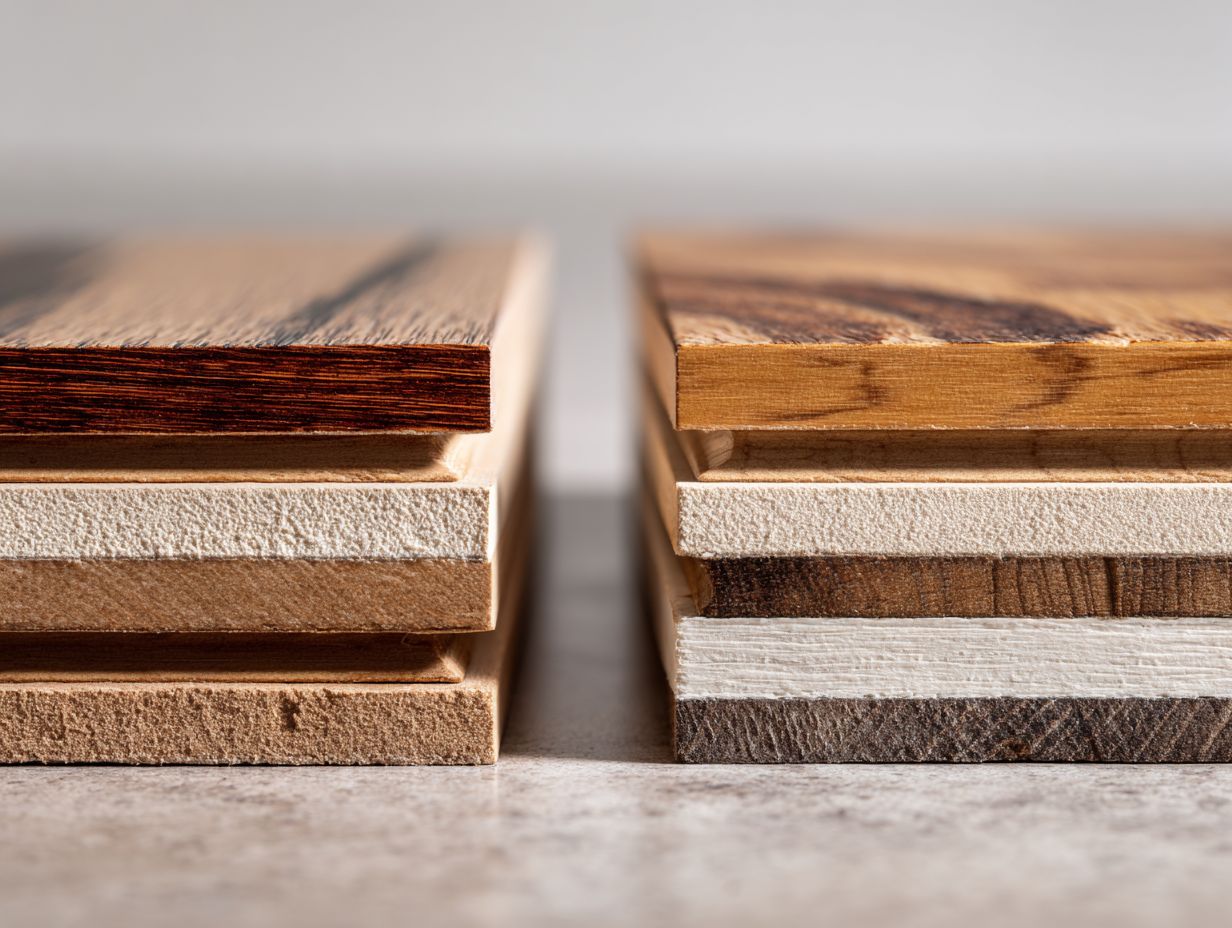
Solid hardwood floors can be sanded and polished multiple times during their lifespan, letting homeowners improve their look and fix damage.
Hardwood floors usually need to be refinished every 7 to 10 years, based on how often they are stepped on and how much they are used. For homes that are used often, you might need to refinish the surfaces every 3-5 years.
The cost of refinishing ranges from $3 to $8 per square foot, encompassing sanding, staining, and sealing. Homeowners can opt for DIY refinishing, which can save money but may require renting equipment such as floor sanders. Alternatively, hiring professionals guarantees a high-quality result, though it is more expensive.
Assess your floor’s condition to determine the best approach.
Cons of Solid Hardwood
Even though solid hardwood flooring has many advantages, there are some issues that buyers should think about.
Cost Considerations
Solid hardwood can be significantly more expensive than other flooring options, typically ranging from $8 to $14 per square foot, excluding installation.
In comparison, engineered hardwood ranges from $4 to $10 per square foot, offering greater affordability while still providing a wood-like appearance.
Laminate flooring, with a price between $1 to $5 per square foot, is the most cost-effective choice but lacks the genuine feel of real wood.
Factors affecting pricing include the species of wood, grade quality, and the market demand.
For instance, exotic woods tend to raise solid hardwood prices, while seasonal sales can lower costs across all types, allowing for more economical choices without sacrificing style.
Susceptibility to Moisture
Solid hardwood can warp and get damaged in places with a lot of moisture, so it’s not a good choice for basements or bathrooms unless you take good care of it.
To protect your hardwood flooring, consider the following strategies.
- Use a dehumidifier to maintain indoor humidity levels between 30-50%, which helps prevent excess moisture buildup.
- Frequently look for cracks or gaps near windows, doors, and pipes; fix any problems quickly to prevent water damage.
- Place mats near entrances to capture moisture and dirt before it reaches your floors.
- Apply a quality sealant to add an extra layer of protection against potential moisture damage.
Installation Challenges
Installing solid hardwood can be complex, requiring specific tools and skills, with average labor costs ranging from $3 to $5 per square foot.
One common installation challenge is subfloor preparation, which often involves checking for moisture levels and ensuring a level surface. To address this, consider using a moisture meter, which can cost around $30, or landlord-friendly leveling compounds.
Acclimation of your hardwood flooring is essential; leave the planks in the installation area for at least 48 hours to adjust to humidity and temperature. Many people who enjoy doing things themselves find online resources like YouTube tutorials helpful, as they provide clear instructions to solve these challenges successfully.
Pros of Engineered Hardwood
Engineered hardwood has many benefits, such as being cheaper, better at handling moisture, and easier to install than solid hardwood.
Cost-Effectiveness
Engineered hardwood typically costs $3 to $10 per square foot, which is less expensive than solid hardwood.
Plus the lower material costs, engineered hardwood often reduces installation expenses due to its simpler click-lock design, allowing for DIY installation. This can save you up to $2 per square foot compared to traditional solid hardwood flooring.
Engineered hardwood is more stable and less prone to warping in varying humidity, which means fewer long-term repair costs. Investing in this flooring can lead to savings of up to 25% over its lifespan, especially in moisture-prone areas like kitchens and basements.
Moisture Resistance
The layered design of engineered hardwood helps it resist moisture, making it suitable for kitchens and basements.
Unlike solid hardwood, which can warp and swell when exposed to humidity, engineered hardwood features a core made from high-density fiberboard or plywood, enhancing its stability.
For instance, while solid hardwood can absorb up to 10% of its weight in moisture, engineered options typically absorb only 2-3%. This reduced moisture vulnerability allows homeowners to install engineered hardwood in areas like laundry rooms or bathrooms with confidence.
Many brands come with warranties of 25 years or more against water damage, further accentuating their suitability for moist environments. If you’re keen on understanding how engineered hardwood compares to other varieties, check out our Complete Guide to Hardwood Flooring Types and Species for comprehensive insights.
Ease of Installation
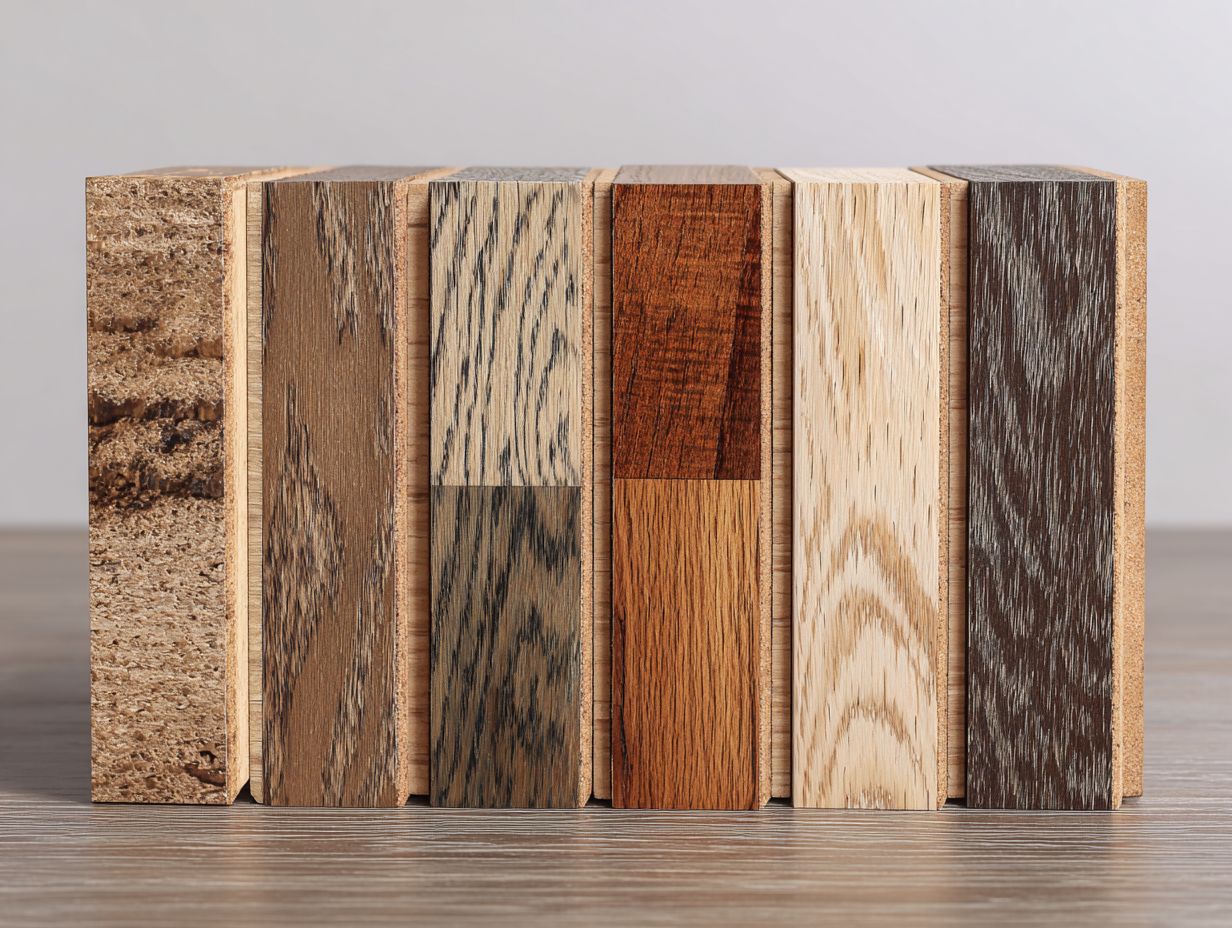
The installation of engineered hardwood is generally simpler, often allowing for DIY installation methods that can save time and labor costs.
To install engineered hardwood, you have two main options: floating and glue-down methods.
The floating system is well-liked because it’s simple; just place the planks on an underlayer without fixing them to the base floor. It typically takes 1-2 days to complete for an average-sized room.
The glue-down method provides a lasting result but needs careful application. It usually takes 2-3 days to complete, including the time needed for the glue to dry.
Let the planks reach room temperature before you start installing them for the best outcome.
Cons of Engineered Hardwood
Engineered hardwood has many advantages, but homeowners should also be aware of its disadvantages before buying.
Limited Refinishing Options
Engineered hardwood can usually only be refinished once or twice due to its thin veneer layer, which limits longevity in high-traffic areas.
This limitation means that while minor scratches and scuffs can be addressed with appropriate cleaning and maintenance, deeper dents and worn areas may signal the need for replacement.
Typically, engineered hardwood can endure light wear from pets and foot traffic, but areas subjected to heavy use-like hallways-may deteriorate faster.
To preserve your flooring, consider using area rugs in high-traffic zones and avoid cleaning products with harsh chemicals that can degrade the veneer.
When the surface wear becomes too pronounced, replacing the planks may be the most practical solution.
Frequently Asked Questions
What is the difference between engineered and solid hardwood flooring?
Engineered hardwood is made up of multiple layers of wood, with a top layer of real hardwood. Solid hardwood is made from a single piece of solid wood, which makes it more durable.
What are the pros of choosing engineered hardwood flooring?
Engineered hardwood is more resistant to moisture and can be installed in areas where solid hardwood cannot, such as basements. It is also more budget-friendly and can be a good alternative to real hardwood.
What are the cons of engineered hardwood flooring?
Some people may find the multi-layer construction less appealing than solid hardwood. It also cannot be refinished as many times as solid hardwood, so it may not last as long.
What are the advantages of choosing solid hardwood flooring?
Solid hardwood is durable and can be sanded and polished repeatedly, making it a wise option for long-lasting use. It also adds more value to a home and has a natural, high-end look.
What are the downsides of solid hardwood flooring?
A key drawback of solid hardwood is that it absorbs moisture easily, which makes it a poor choice for places such as basements. It costs more than engineered hardwood and might not fit all budgets.
What is the cost difference between engineered and solid hardwood flooring?
The cost of engineered hardwood ranges from $3 to $14 per square foot, while solid hardwood can cost anywhere from $8 to $25 per square foot. The cost will also depend on the type of wood and quality of the flooring.
